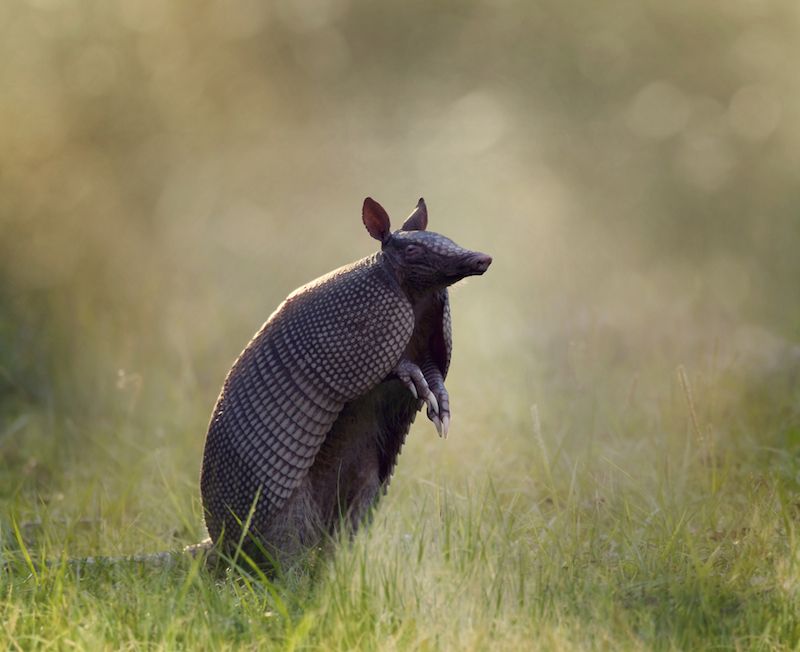Animal Sex: How Nine-Banded Armadillos Do It

The armadillo is one of the few mammals covered in defensive body armor — in fact, armadillo means "little armored one" in Spanish. Their protective plates shield them from the attacks of potential predators, but are armadillos just as guarded with their hearts?
There are 21 species of armadillos across the globe. The nine-banded armadillo is the only armadillo species found in the United States, and it's also the state small mammal of Texas. This species is named for the bands of plates on its back; they have an average of nine bands, but the actual number varies among individuals of the species.
Nine-banded armadillos are mostly solitary creatures and usually come together only during the breeding season, which lasts from early summer through autumn, said Colleen McDonough, a behavioral ecologist at Valdosta State University in Georgia who studies nine-banded armadillos. Adults set up small home ranges that may overlap with those of other adults, and they may have low levels of interactions in these overlapping areas, she said. [Animal Sex: 7 Tales of Naughty Acts in the Wild]
"They may be feeding near one another but not with one another," McDonough told Live Science. "They have a pretty good olfactory system, so they likely know who is around and who should be around."
The mating behaviors of nine-banded armadillos are not well known, but McDonough has made some careful observations of the animals during the breeding season. During the breeding season, males use their powerful noses to find a female with which to "pair." It's most common to see males pair with females whose home ranges overlap most with their own, McDonough said.
Pairing behavior is a kind of courtship ritual in which the male tries to remain in close proximity to the female (within a few meters) at all times. If the female is unreceptive, however, she'll do all she can to get away, including kicking at him with her hind legs, according to McDonough. But females are generally much more tolerant of males during the breeding season.
If another male comes up to a couple, the paired male will rush off to meet him; in some cases, he will simply chase the newcomer off, but other times, a duel can ensue. These battles can get vicious, with the males attacking each other with their formidable claws.
Sign up for the Live Science daily newsletter now
Get the world’s most fascinating discoveries delivered straight to your inbox.
"There was this one time where I did see one male usurp the other [paired] male," McDonough said.
Aside from remaining close by his chosen mate and protecting her, the male will engage in other smooth moves, such as touching the back end of her carapace with his front paws, sniffing her genitalia, and bringing his body into physical contact with hers. The female will occasionally lift her tail (exposing her genitals) and wag it from side to side. The pair may also forage near each other and make low "chuck" sounds to each other that can be heard only within a 15-foot (5 meters) radius. [The 7 Weirdest Animal Penises]
Overall, these behaviors ramp up and intensify as the pair gets closer to mating, with the male touching the female more and becoming more focused on her genital area, McDonough said. To mate, the female lifts her tail, and the male mounts her from behind.
Interestingly, nine-banded armadillos have delayed implantation. In other words, depending on when the female mated, her eggs may not implant into her uterus for development for several months; this delay allows her to time the birth of her quadruplets with the coming of spring.
In one unusual case, McDonough said, pregnant females were transported from the United States to England for leprosy studies. "The females were alone for at least a year and a half," she said. "But then, they gave birth."
Original article on Live Science.











